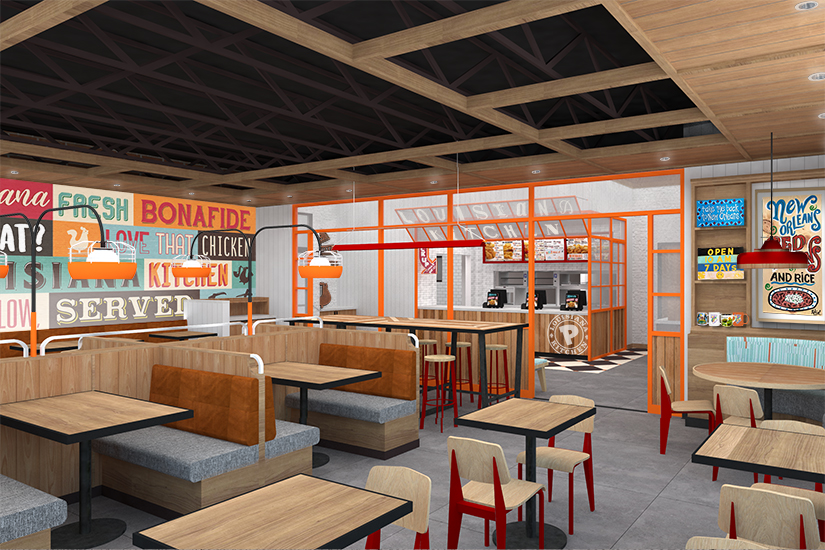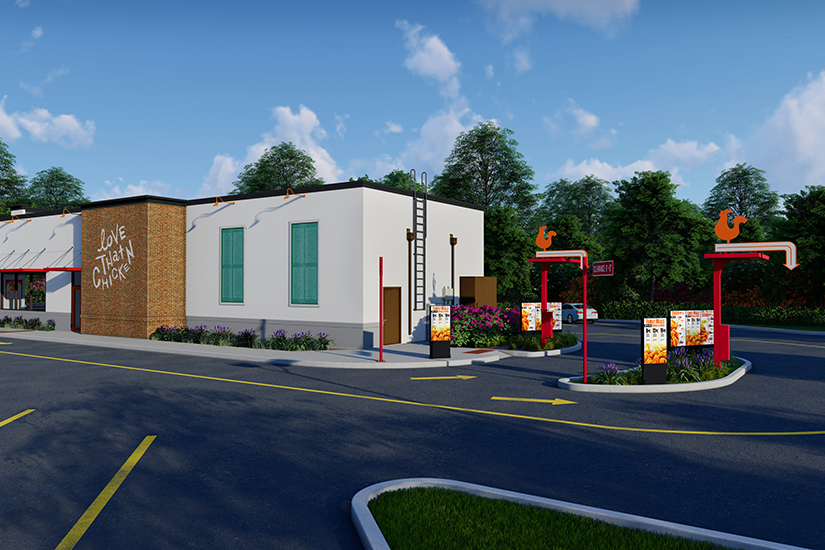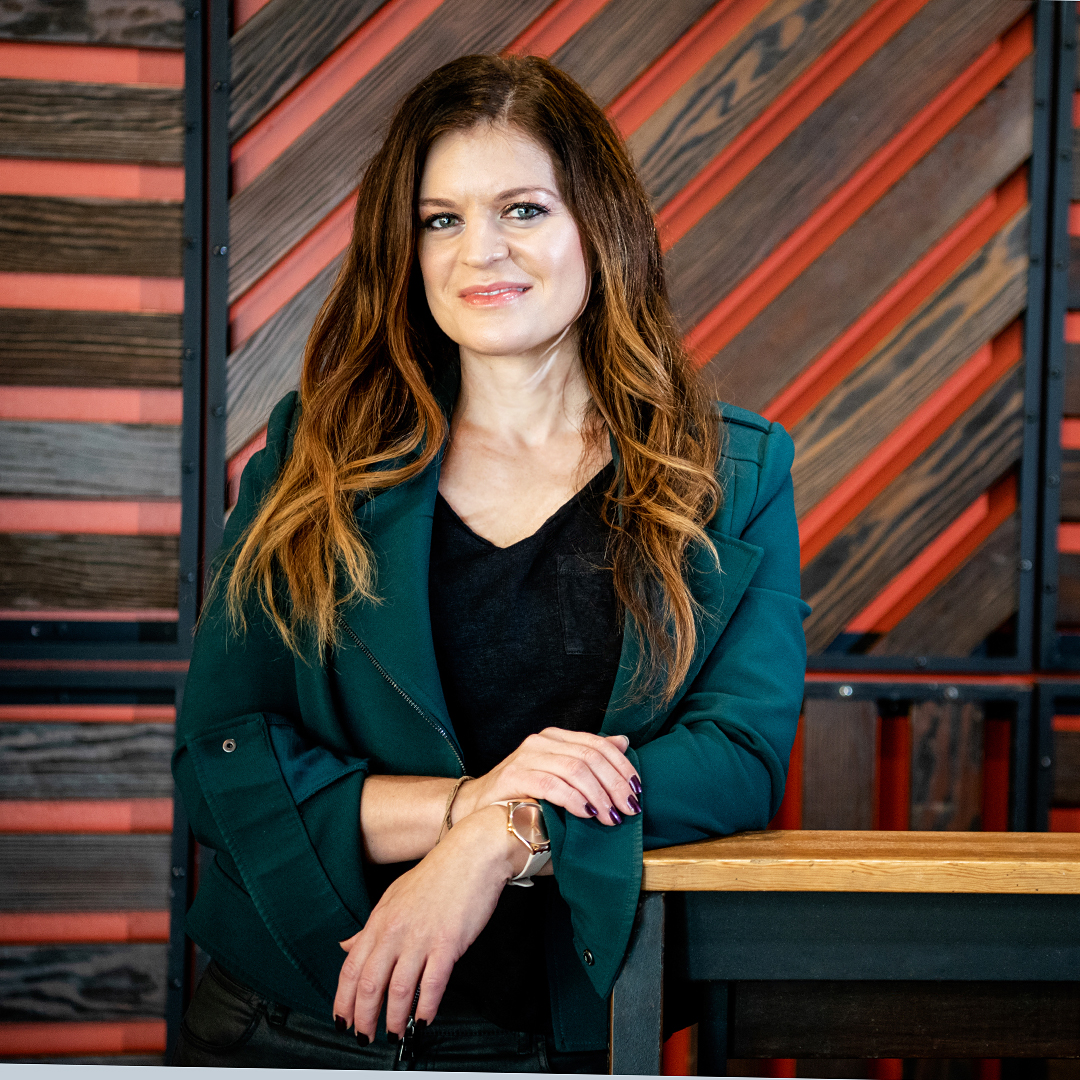|
Getting your Trinity Audio player ready...
|
In August 2019, the Popeyes chicken sandwich took the media by storm.
Twitter battles and Instagram polls arguing the quality of this sandwich over other fast food chains erupted, and morning show hosts were even filling entire TV segments on trying the sandwich. This media frenzy led to franchisees selling out of sandwiches in mere hours. The chicken sandwich came at an excellent time not only for Popeyes Louisiana Kitchen’s marketing team, but also to propel the company into its long-researched rebrand.

Jessica Aleman, lead architect of design and construction of Popeyes Louisiana Kitchen through Restaurant Brands International (RBI), offers some context on this rebrand and the process of implementing the restaurant chain’s new image.
“When our parent company RBI bought out Popeyes roughly three years ago, it started looking into the brand as a whole,” Aleman explains. “The company realized that Popeyes was really behind in the industry as far as brand level goes. So we got together with some design agencies and we started looking into how we could revamp the image that is currently in place.”
The main concept that everyone seemed to land on was returning to Popeyes’ New Orleans roots. “Popeyes was born in New Orleans, yet our image was outdated and lacked the vibrancy of the city,” Aleman says. Thus the research and concept behind Popeyes’ NOLA Makers Image was born.
“Our designers, marketing team, and our design agencies spent over a year immersing themselves within the New Orleans culture,” she says, adding that these teams focused on design details from materials to lighting that embodied true New Orleans fashion. “We wanted to work out how we could bring these details into a QSR (quick-service restaurant), fast-paced environment, so that when you look at the NOLA Makers Image, it truly highlights the things that make up New Orleans.”
The new NOLA Makers Image incorporates homemade items and furniture on the interior to give diners the feel of eating a meal right at home, while natural materials and marquis lighting on the exterior mirror the feel of strolling down New Orleans’ iconic streets.
“It’s a very exciting process,” Aleman enthuses. “Getting to be a part of this rebrand from the concept phase, from sourcing materials to finding suppliers, to value engineering all of these elements, it’s all so interesting, and I love being part of it.” While the rebrand has proved to be incredibly exciting, Aleman concedes that there have also been some pretty significant challenges that she and her team have faced as well.
“Once the NOLA Makers Image was finalized, it took us quite some time to get to the next level of the rebrand,” Aleman says. During this time, RBI was undergoing transition. The company moved Popeyes’ corporate offices from Atlanta to Miami, and it took roughly one year to complete this migration. “During this transition, the image hit a standstill. So for two years we were showcasing this brand new image to franchisees, yet it wasn’t ready for these franchisees to participate in. It was incredibly challenging to navigate.”

Though things weren’t quite ready to roll out for the rebrand, franchisees were extremely interested. “We had franchisees reaching out to us saying, ‘We want to implement this rebrand even though we know it’s not ready; we just feel so confident that we want to take the risk alongside you,’” Aleman recalls. “So with the more that people reached out to us, we internally decided to start a pilot program.” This pilot program allowed franchisees that wished to collaborate on the NOLA Makers Image to “test drive” the new brand.
Of the pilot program, Aleman explains that the Popeyes system is unique in which 100 percent of its sites are based off the current LK+ image and all traditional sites use the standard prototype build, giving the company an advantage when creating a way to update its existing fleet. However, the team needed to be creative because it was nowhere near ready to launch it system-wide. Instead the remodel image was used as the designated pilot program image since the team had just completed its first corporate remodel and was now further along with the concept.

“It was a great opportunity for us to work alongside our franchisees and see what was or wasn’t working before we rolled out the brand across all stores,” Aleman says. “Now that franchisees are taking part in this as well, it has given us a broader field to collect data and analysis for the rebrand.”
In the pilot program, there are currently 23 franchisees with 84 locations in total that have committed to implementing the new image before system-wide rollout. While this is great for the aforementioned data and analysis, it also lends to some of the challenges for Aleman and Popeyes.
“When a brand rolls out an image, it’s after they have value engineered, after they have done their RFPs, and data and analysis, but because of this pilot program, we have had to work with these franchisees on a daily basis because they are asking us questions that we, theoretically, don’t have the answers to yet,” she explains. “It definitely keeps us on our toes because every day there is something new that we are trying to put together guidelines for. The franchisees are ahead of the game, so they are asking before we even have the information ready.”
Overall, Aleman has found the pilot program for Popeyes’ NOLA Makers Image advantageous. “It’s overwhelming sometimes because we are doing it at such a fast pace to reach our goal of system-wide implementation by July 1, but it’s awesome to work with the franchisees ahead of time. It’s a learning tool, and it has been great to be able to fine tune everything before we roll it all out,” Aleman says with confidence.


